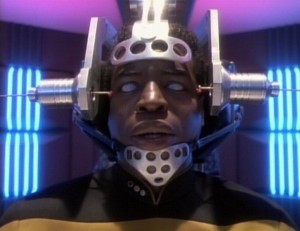It goes without saying that to successfully innovate, we need to be willing to learn new things. What doesn’t get said as often is that we also need to be willing to unlearn old things—and that’s often the more important task.
One of the central challenges innovators manage to overcome is the tendency to cling to past assumptions and beliefs and orthodoxies. Being willing and able to escape that mental inertia is one of the things that most distinguishes innovators. They’re skilled uinlearners.
This means two things.
1) Being willing to change our assumptions and beliefs about how to do things. For example what we believe is the best way to market music. Recording artists have had to unlearn some assumptions about the necessity of retail sales of CDs, in order to embrace a different business model of online digital downloads
2) Being willing to rethink how we use our own heads. This is in a sense what facilitating a brainstorming session amounts to. Participants are asked to suspend certain attitudes and judgments in order to free up their creativity. When done well, the results can be amazing.
This second meaning is the very counterintuitive path to enhanced creativity. In an often-quoted study recounted in a recent TEDx talk, noted creativity researcher George Land tells of being asked by NASA back in the 1960s to develop a way to assess the creativity of its engineers. He did and it worked, so he decided to try it on some children. He used the same assessment he developed for NASA to test the imaginative capabilities of children ages 3-5, who were enrolled in the early Head Start program.
His astounding finding was that 98-percent of those children scored as creative geniuses, compared to just 2% of adults. He tested the same kids again at five year intervals and found a dramatic drop in that creativity, down to only about a third of them scoring that high by age 10, and down to just 12% by age 15. Land observed that we don’t learn to be creative; on the contrary, we start out creative and learn to be uncreative!
The take-away is that to become creative (again)—and by extension innovative—we need to unlearn our uncreativity. We need to get out of our own way. That means shifting away from the mental model that knowledge is cumulative, as we were taught in school, and being willing to revise or even abandon things we believe to be true. It’s not unusual for the very act of deliberately contradicting some presumed truth to be the trigger for a breakthrough insight.
The challenge of unlearning is very different from the challenge of learning. For one thing, it’s much easier! It doesn’t require study and memorization, or even the hard lessons of first hand experience. All it requires is that we make different choices.
Think about this: How would you respond to someone who told you that you needed to unlearn how to drive a car or ride a bike, or read (other than look baffled)? It’s an almost nonsensical request, isn’t it?. We may lose proficiency at something we haven’t practiced for awhile, but once we develop a capability, we never entirely lose it. All we can do is decide not to use it anymore. We can stop driving or reading or playing chess, which is less difficult than learning any of those skills in the first place. In other words, once we have mastered something, unlearning that skill, or at least “unapplying” that skill is as easy as changing our mind. Yet to make that choice, we need to first become aware of it. We have to recognize what we’re choosing not to do.
Here’s a short list of what we need to stop doing to become more creative.
1) Stop immediately passing judgment on our ideas to allow ourselves the freedom to use our imagination as a child does.
2) Stop inhibiting ourselves, by becoming more playful and finding the fun in the task at hand.
3) Stop using prior knowledge to reject new ideas. Our knowledge is a powerful source of possibilities to explore and pursue but too often we use our knowledge to reject possibilities that don’t fit our prior assumptions and beliefs. The effect is that our knowledge slows rather than enhances innovation.
4) Stop looking for the one right answer (as we were taught to do in school) by making a point of considering multiple interpretations of what we observe and experience.
5) Stop avoiding risk and start managing it. It’s essential to achieving innovation.
6) Stop trying to always get it right, by testing the boundaries instead. As we learn what doesn’t work, we gain a clearer understanding of what does.
And, yes, all of these can be done effectively in a performance-based outcome-driven business environment. We just need to unlearn some of our prior assumptions about good business practices.
There are times when we all need to unlearn something.
Get the new Special Report, Innovation Essentials: The Four Greatest Ways We Stop Ourselves…In Business and in Life. Download a free copy at: http://www.insightfusion.com/SpecialReport.asp


Leave A Comment